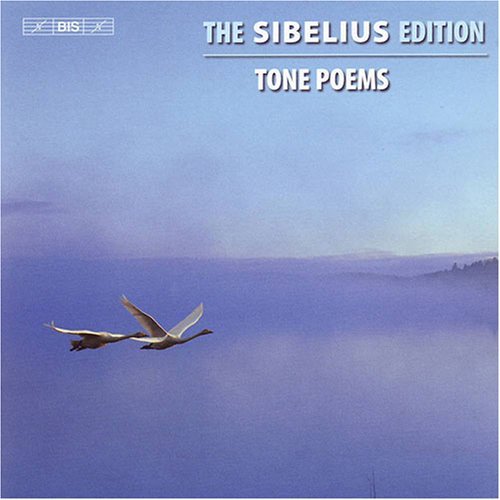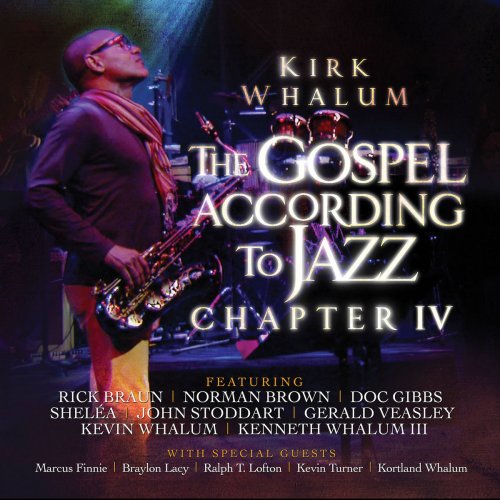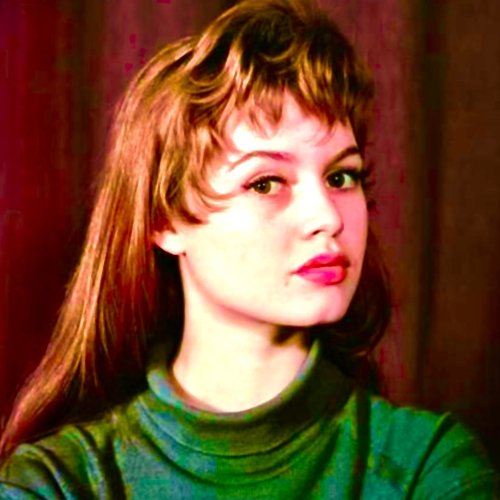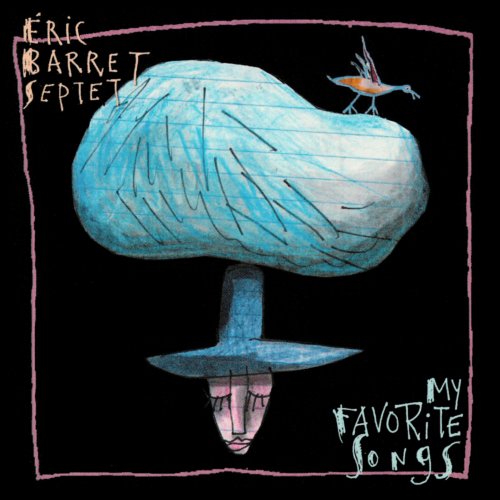VA - The Sibelius Edition, Vol.1 -Tone Poems (5CD) (2011)

Artist: VA
Title: The Sibelius Edition, Vol.1 -Tone Poems
Year Of Release: 2011
Label: BIS
Genre: Classical
Quality: FLAC (image+.cue,log)
Total Time: 06:28:58
Total Size: 1.6 gb
WebSite: Album Preview
Tracklist: Title: The Sibelius Edition, Vol.1 -Tone Poems
Year Of Release: 2011
Label: BIS
Genre: Classical
Quality: FLAC (image+.cue,log)
Total Time: 06:28:58
Total Size: 1.6 gb
WebSite: Album Preview
CD 1:
01. En saga, Op. 9 [21:51]
Tone Poem for Large Orchestra
1892 - original version (Manuscript / Breitkopf & Härtel)
(Andante assai - Largamente - Allegro - Molto moderato - Allegro - Tranquillo)
From Lemminkäinen Suite, Op. 22
(Four Legends from the Kalevala)
02. I. Lemminkäinen and the Maidens of the Island [14:24]
1896 - original version (?)
(Allegro assai - Allegro)
03. II. Lemminkäinen in Tuonela [22:07]
1896 version - reconstruction based on the performing
edition by Colin Davis (2004) (Manuscript)
(Largamente - Molto lento - Largamente)
04. IV. Lemminkäinen’s Return [11:23]
1896 - original version (?) (Manuscript / Breitkopf & Härtel)
(Allegro con fuoco - Molto vivace)
05. IV. Lemminkäinen’s Return [11:50]
1896, rev. 1897 - intermediate version (?) (Manuscript / Breitkopf & Härtel)
(Allegro con fuoco - Molto vivace - [Quasi presto / Vivacissimo])
CD 2:
01. Improvisation / Spring Song [Op. 16] [9:18]
Preliminary version of Spring Song (1894) (Breitkopf & Härtel)
(Moderato e molto sostenuto)
02. The Wood-Nymph, Op. 15 [21:37]
Ballad for Orchestra (1894/95) (Breitkopf & Härtel)
(Alla marcia - Vivace assai - Molto vivace - Tempo I - Moderato - Molto lento)
Ilkka Pälli cello
03. En saga, Op. 9 [18:03]
Tone Poem for Large Orchestra
1892, rev. 1902 - final version (Breitkopf & Härtel)
(Moderato assai - Allegro - Lento assai - Allegro molto - Moderato e tranquillo)
04. Cassazione , Op. 6 [12:14]
1904 – original version (Manuscript / Breitkopf & Härtel)
(Allegro moderato - Molto moderato - Un poco lento - Allegro moderato)
05. Musik zu einer Scène [5:32]
Preliminary version of Dance-Intermezzo (1904) (Manuscript / Breitkopf & Härtel)
(Andante di molto - Allegretto)
06. Finland Awakes [8:27]
Preliminary version of Finlandia (1899 (?)) (Manuscript / Breitkopf & Härtel)
(Allegro moderato - Allegro - Poco allegro - Un poco stretto)
CD 3:
01. Finlandia, Op. 26 [8:28]
1899, rev. 1900 - final version (Breitkopf & Härtel)
(Andante sostenuto - Allegro moderato - Allegro)
02. Spring Song, Op. 16 [7:34]
1894, rev. 1895 (Breitkopf & Härtel)
(Tempo moderato e sostenuto)
03. In memoriam, Op. 59 [11:21]
Funeral March for Large Orchestra
1909, rev. 1910 - final version (Breitkopf & Härtel)
(Grave e maestoso)
Lemminkäinen Suite, Op. 22 [49:08]
(Four Legends from the Kalevala)
04. I. Lemminkäinen and the Maidens of the Island [15:12]
1896, rev. 1897 & 1939 - final version (Breitkopf & Härtel)
(Allegro molto moderato - Allegro moderato)
05. II. The Swan of Tuonela [9:27]
1893, rev. 1897 & 1900 - final [only surviving] version (Breitkopf & Härtel)
(Andante molto sostenuto)
Jukka Hirvikangas cor anglais
06. III. Lemminkäinen in Tuonela [17:41]
1896, rev. 1897 & 1939 - final version (Breitkopf & Härtel)
(Il tempo largamente - Molto lento - Largo assai)
07. IV. Lemminkäinen’s Return [6:27]
1896, rev. 1897 & 1900 - final version (Breitkopf & Härtel)
(Allegro con fuoco (poco a poco più energico) - Quasi Presto - Presto)
CD 4:
01. Pohjola’s Daughter, Op. 49 [13:10]
Symphonic Fantasia 1906 (Lienau)
(Largo - Moderato - Largamente - Tranquillo molto - Allegro - Largamente)
02. Night Ride And Sunrise, Op. 55 [17:20]
Tone Poem for Orchestra 1908 (Lienau)
(Allegro - Moderato assai - Largamente - Largo (ma non troppo lento))
03. The Dryad, Op. 45 No. 1 [5:07]
Tone Picture for Orchestra 1910 (Breitkopf & Härtel)
(Lento - Meno lento - Un pochettino con moto - Lento assai - Un pochettino con moto - Stretto assai - Commodo - Vivace - Largamente)
04. Dance-Intermezzo, Op. 45 No. 2 [2:41]
1904, rev. 1907 (Breitkopf & Härtel)
(Andante - Commodo e tranquillo - Con moto)
05. The Bard, Op. 64 [7:32]
Tone Poem 1913 (Breitkopf & Härtel)
(Lento assai - Largamente)
Leena Saarenpää harp
06. The Oceanides, Op. 73 [10:03]
Tone Poem for Large Orchestra 1914 – final version (Breitkopf & Härtel)
(Sostenuto assai - Largamente)
07. Tapiola, Op. 112 [17:22]
Symphonic Poem for Orchestra 1926 (Breitkopf & Härtel)
(Largamente - Allegro moderato - Allegro)
CD 5:
01. Luonnotar, Op. 70 [8:50]
for Soprano and Orchestra (text: Kalevala) 1913 (Breitkopf & Härtel)
(Tempo moderato - Tranquillo assai)
02. The Oceanides, Op. 73 [7:25]
Tone Poem for Large Orchestra 1914 - Yale version (Manuscript / Breitkopf & Härtel)
(Larghetto)
03. In memoriam, Op. 59 [10:25]
Tone Poem for Large Orchestra 1909 - original version (Manuscript / Breitkopf & Härtel)
(Andante con moto)
04. Cassazione, Op. 6 [12:55]
1904, rev. 1905 – final version (Warner / Chappell Music Finland)
(Allegro - Molto moderato - Un poco lento - Allegro moderato)
Scènes historiques I, Op. 25 [18:09]
Suite for Orchestra 1899, rev. 1911 (Breitkopf & Härtel)
05. I. All’ Overtura [4:37]
(Grave - Allegro - Grave - Allegro)
06. II. Scena [6:11]
(Tempo di menuetto - Allegro moderato - Allegro, poco a poco più)
07. III. Festivo [7:07]
(Tempo di Bolero)
Scènes historiques II, Op. 66 [17:51]
Suite for Orchestra 1912 (Breitkopf & Härtel)
08. I. La Chasse [6:27]
(Andante - Allegro con brio - Doppio più lento)
09. II. Love Song [4:30]
(Largo)
10. III. At the Draw-Bridge [6:37]
(Allegro moderato - Andante)
CD1-4; CD5 tracks 1-3: Lahti Symphony Orchestra (Sinfonia Lahti), Osmo Vänskä conductor
CD5 tracks 4-10: Gothenburg Symphony Orchestra, Neeme Järvi conductor
Bis's endeavor to record the complete surviving works, and scraps, of Finland's most important composer starts right off with this five-CD set devoted to the tone poems, the best of which stand alongside the symphonies at the pinnacle of Sibelius's achievement. In this set you will find five incontrovertible masterpieces: En Saga, Pohjola's Daughter, Night Ride and Sunrise, Tapiola and Luonnatar (which is really more of a cantata, and is also included, in a different performance, in Volume 3 ). The featured performers are the Lahti Symphony Orchestra, which during the Osmo Vänskä years (1988-2008) emerged as the pre-eminent orchestra in Finland, and perhaps all of Scandinavia. This set is a great opportunity to check out what all the fuss is about with respect to this ensemble. Their recorded legacy captured herein really is something special.
The Lahti is a relatively small band, about 70 players. You can tell in the multi-tracked sound. Working in conjunction with Bis engineering and Vänskä's slow tempos and unusually literal approach to the scores, the result is an exquisite orchestral balance and a reliable spotlight shone on lots of details that you probably haven't noticed before in these works. Listen to the climax toward the end of Lemminkäinen and the Maidens of Saari: the sensuous wave of sound from the horns in syncopation is balanced perfectly against the woodwind filigrees (that recall the main theme), the pedal in the bass, and the echoes of the second theme in the upper strings. Or listen to the final version of En Saga, where the dotted ||:tut te tut tut:|| rhythm of the second theme is clearly audible in the pizzicato lower strings in anticipation of the bass drum entrance. In Finlandia, are those actual trills in the bass in the long static passage at the start of the Allegro moderato? Indeed they are, and you'll hear them clearly here. In Pohjola's Daughter you can even hear the harp plucking away as the climax approaches, something that's usually buried in live performance. If you've ever been introduced to a Bartók or Stravinsky masterpiece through a generic recording only to get blown away by the experience of hearing it interpreted by someone of Boulez's caliber, then you'll recognize the experience I'm describing here.
Some of the slow tempos are hard to get used to, though I only occasionally found them tedious. The sunrise in Night Ride and Sunrise is probably the slowest in history. You definitely hear each of the crepuscule's eighth notes in the woodwinds' and strings' 9/4 while the brass intone the chorale in 3/2 time. You may or may not WANT to hear each note individually, but this is the kind of thing that can be revelatory if you've already experienced the piece many times. To their credit, the Lahti brass exhibit no strain sustaining the soft chorale passages at this extreme tempo. Less successful is Lemminkäinen in Tuonela, which is already uncharacteristically monotonous (for Sibelius), and especially prone to dragging at Vänskä's pace.
One of the pleasures of this set is having the opportunity to hear some familiar works in earlier guises. En Saga, Finlandia and three of the four Legends from the Kalevala are among the works whose pre-publication versions can be heard, and the original 1892 version of En Saga is especially interesting. Sibelius always deleted more than he added when revising works, and this version is four minutes shorter in Vänskä time than the eventual 1902 edition. Most of the extra material is transitional. In the final version Sibelius took out several bridge passages and either replaced them with a perfunctory transition or else directly juxtaposed two musical ideas. Often Sibelius's "experiments" got excised in a work's final version. The non-tonic chord with which Sibelius originally ended what we now know as the "first" movement of the 5th Symphony became a conventional full cadence in the tonic in the final version. In the case of En Saga one such quirk is an odd modulating cadence appended to the double-reed passage just before the work's final climax, which combines the first theme with the dotted rhythm of the second theme. This gets "straightened out" in the 1902 version to something more conventional (and the climax is shortened by about a minute by removing an intervening elaboration). The Lahtis give a gripping account of both original and final version, kindly refraining from excessive vibrato in the many woodwind solos.
On to some other highlights. Finlandia is heard in both its final version and an intermediate version. You need Volume 8 to get the true original version that concluded the so-called Press Celebration Music of 1899. The differences among these versions are heard in the ending. Originally the coda was rhythmically different and didn't reprise the central section's hymn tune. The intermediary version goes to the other extreme, restating the hymn tune in full. Sibelius finally settled on a partial restatement in the familiar final version.
The Wood Nymph dates from 1894-5, a couple years after the first version of En Saga (but well before the latter's final version of 1902), and is contemporaneous with the first versions of the Four Legends from the Kalevala. It certainly seems to belong to the latter's sound world. It's flawed to be sure: the long passage with the constant alternation between i and vi (65) chords in minor doesn't have the cumulative impact of the corresponding passage in the later Night Ride and Sunrise or even the last movement of the Second Symphony (whose success is still a matter of contention), and the overall architecture is not as coherent as Sibelius's later works that departed from conventional Romantic forms. But it's nevertheless a tone poem deserving of its recent rediscovery.
The Swan of Tuonela is perhaps the second most famous English horn solo in the orchestral repertory (after the New World Symphony). Jukka Hirvikangas plays it beautifully and with admirable wind control, especially in the exposed upper register (which Sibelius twice supports with an oboe doubling). The score reveals the considerable lengths that Sibelius often takes to conceal the ostensible 9/4 meter, an effect coupled in performance by the tendency of conductors (and English horn soloists) to introduce a bit of rubato. Even the ordinarily fastidious Vänskä shortens some of the phrases that end with long sustained notes. Then there are the usual Sibelius notational quirks. One is his insistence on tempo indications like "meno moderato", which Vänskä interprets to be faster than plain ol' "moderato". Another is his proclivity to use quarter notes, rather than the more common eighth notes, as the base value for compound time. The result in this case is bars filled with nine hard-to-read quarter notes, with no beams to assist the musician in grouping the notes (the trio in the Second Symphony is even worse, in 12/4 time with a main theme that emphasizes repeated notes).
The last section of the piece centers on a new theme initially played by the violins, violas and cellos in unison -- a powerful effect since the scoring up to this point has emphasized solo and subdivided strings. Sibelius calls for the timpanist to play A and C simultaneously, reinforcing the accompanying duplet rhythm in the brass and double basses. When the melody passes back to the English horn, the duplet rhythm continues in the timpani, but the brass/bases give way to a harp, which adds an F# to the A minor triad, arpeggiating it A-E-F#-C to emphasize its identity as two fifths separated by a second, a favorite Sibelius trick (the accompaniment to the second theme in Luonnotar does the same thing, as does the horn chord at the start of Lemminkäinen and the Maidens of Saari).
After 4½ discs' worth of Vänskä and the Lahtis, we get Neeme Järvi, an Estonian by birth (and thus a native speaker of one of the few languages related to Finnish) and the Gothenburg Symphony Orchestra, from Sweden's second largest city, for the Scènes Historiques. They do fine on these attractive pieces, but they're not in the world-class league of the Finns.
Working your way through some of the Sibelius Edition volumes that are filled with juvenilia and lackluster piano and chamber music can feel like a chore. But listening through these Volume 1 discs crammed with masterpieces and definitive performances is a pure unmitigated joy. Highly recommended for all Sibelius fans.
The Lahti is a relatively small band, about 70 players. You can tell in the multi-tracked sound. Working in conjunction with Bis engineering and Vänskä's slow tempos and unusually literal approach to the scores, the result is an exquisite orchestral balance and a reliable spotlight shone on lots of details that you probably haven't noticed before in these works. Listen to the climax toward the end of Lemminkäinen and the Maidens of Saari: the sensuous wave of sound from the horns in syncopation is balanced perfectly against the woodwind filigrees (that recall the main theme), the pedal in the bass, and the echoes of the second theme in the upper strings. Or listen to the final version of En Saga, where the dotted ||:tut te tut tut:|| rhythm of the second theme is clearly audible in the pizzicato lower strings in anticipation of the bass drum entrance. In Finlandia, are those actual trills in the bass in the long static passage at the start of the Allegro moderato? Indeed they are, and you'll hear them clearly here. In Pohjola's Daughter you can even hear the harp plucking away as the climax approaches, something that's usually buried in live performance. If you've ever been introduced to a Bartók or Stravinsky masterpiece through a generic recording only to get blown away by the experience of hearing it interpreted by someone of Boulez's caliber, then you'll recognize the experience I'm describing here.
Some of the slow tempos are hard to get used to, though I only occasionally found them tedious. The sunrise in Night Ride and Sunrise is probably the slowest in history. You definitely hear each of the crepuscule's eighth notes in the woodwinds' and strings' 9/4 while the brass intone the chorale in 3/2 time. You may or may not WANT to hear each note individually, but this is the kind of thing that can be revelatory if you've already experienced the piece many times. To their credit, the Lahti brass exhibit no strain sustaining the soft chorale passages at this extreme tempo. Less successful is Lemminkäinen in Tuonela, which is already uncharacteristically monotonous (for Sibelius), and especially prone to dragging at Vänskä's pace.
One of the pleasures of this set is having the opportunity to hear some familiar works in earlier guises. En Saga, Finlandia and three of the four Legends from the Kalevala are among the works whose pre-publication versions can be heard, and the original 1892 version of En Saga is especially interesting. Sibelius always deleted more than he added when revising works, and this version is four minutes shorter in Vänskä time than the eventual 1902 edition. Most of the extra material is transitional. In the final version Sibelius took out several bridge passages and either replaced them with a perfunctory transition or else directly juxtaposed two musical ideas. Often Sibelius's "experiments" got excised in a work's final version. The non-tonic chord with which Sibelius originally ended what we now know as the "first" movement of the 5th Symphony became a conventional full cadence in the tonic in the final version. In the case of En Saga one such quirk is an odd modulating cadence appended to the double-reed passage just before the work's final climax, which combines the first theme with the dotted rhythm of the second theme. This gets "straightened out" in the 1902 version to something more conventional (and the climax is shortened by about a minute by removing an intervening elaboration). The Lahtis give a gripping account of both original and final version, kindly refraining from excessive vibrato in the many woodwind solos.
On to some other highlights. Finlandia is heard in both its final version and an intermediate version. You need Volume 8 to get the true original version that concluded the so-called Press Celebration Music of 1899. The differences among these versions are heard in the ending. Originally the coda was rhythmically different and didn't reprise the central section's hymn tune. The intermediary version goes to the other extreme, restating the hymn tune in full. Sibelius finally settled on a partial restatement in the familiar final version.
The Wood Nymph dates from 1894-5, a couple years after the first version of En Saga (but well before the latter's final version of 1902), and is contemporaneous with the first versions of the Four Legends from the Kalevala. It certainly seems to belong to the latter's sound world. It's flawed to be sure: the long passage with the constant alternation between i and vi (65) chords in minor doesn't have the cumulative impact of the corresponding passage in the later Night Ride and Sunrise or even the last movement of the Second Symphony (whose success is still a matter of contention), and the overall architecture is not as coherent as Sibelius's later works that departed from conventional Romantic forms. But it's nevertheless a tone poem deserving of its recent rediscovery.
The Swan of Tuonela is perhaps the second most famous English horn solo in the orchestral repertory (after the New World Symphony). Jukka Hirvikangas plays it beautifully and with admirable wind control, especially in the exposed upper register (which Sibelius twice supports with an oboe doubling). The score reveals the considerable lengths that Sibelius often takes to conceal the ostensible 9/4 meter, an effect coupled in performance by the tendency of conductors (and English horn soloists) to introduce a bit of rubato. Even the ordinarily fastidious Vänskä shortens some of the phrases that end with long sustained notes. Then there are the usual Sibelius notational quirks. One is his insistence on tempo indications like "meno moderato", which Vänskä interprets to be faster than plain ol' "moderato". Another is his proclivity to use quarter notes, rather than the more common eighth notes, as the base value for compound time. The result in this case is bars filled with nine hard-to-read quarter notes, with no beams to assist the musician in grouping the notes (the trio in the Second Symphony is even worse, in 12/4 time with a main theme that emphasizes repeated notes).
The last section of the piece centers on a new theme initially played by the violins, violas and cellos in unison -- a powerful effect since the scoring up to this point has emphasized solo and subdivided strings. Sibelius calls for the timpanist to play A and C simultaneously, reinforcing the accompanying duplet rhythm in the brass and double basses. When the melody passes back to the English horn, the duplet rhythm continues in the timpani, but the brass/bases give way to a harp, which adds an F# to the A minor triad, arpeggiating it A-E-F#-C to emphasize its identity as two fifths separated by a second, a favorite Sibelius trick (the accompaniment to the second theme in Luonnotar does the same thing, as does the horn chord at the start of Lemminkäinen and the Maidens of Saari).
After 4½ discs' worth of Vänskä and the Lahtis, we get Neeme Järvi, an Estonian by birth (and thus a native speaker of one of the few languages related to Finnish) and the Gothenburg Symphony Orchestra, from Sweden's second largest city, for the Scènes Historiques. They do fine on these attractive pieces, but they're not in the world-class league of the Finns.
Working your way through some of the Sibelius Edition volumes that are filled with juvenilia and lackluster piano and chamber music can feel like a chore. But listening through these Volume 1 discs crammed with masterpieces and definitive performances is a pure unmitigated joy. Highly recommended for all Sibelius fans.
DOWNLOAD FROM ISRA.CLOUD
CD1 The Sibelius Edition Vol 1 Tone Poems 11 1409.rar - 337.3 MB
CD2 The Sibelius Edition Vol 1 Tone Poems 11 1409.rar - 328.0 MB
CD3 The Sibelius Edition Vol 1 Tone Poems 11 1409.rar - 343.9 MB
CD4 The Sibelius Edition Vol 1 Tone Poems 11 1409.rar - 286.8 MB
CD5 The Sibelius Edition Vol 1 Tone Poems 11 1409.rar - 295.4 MB
CD1 The Sibelius Edition Vol 1 Tone Poems 11 1409.rar - 337.3 MB
CD2 The Sibelius Edition Vol 1 Tone Poems 11 1409.rar - 328.0 MB
CD3 The Sibelius Edition Vol 1 Tone Poems 11 1409.rar - 343.9 MB
CD4 The Sibelius Edition Vol 1 Tone Poems 11 1409.rar - 286.8 MB
CD5 The Sibelius Edition Vol 1 Tone Poems 11 1409.rar - 295.4 MB
![Paul Mauriat - Après toi (1972) [Hi-Res] Paul Mauriat - Après toi (1972) [Hi-Res]](https://img.israbox.com/img/2025-12/19/7apc8ramq91sp9mgfuj4lcflg.jpg)

![Enrico Zanisi - Blend Pages (2025) [Hi-Res] Enrico Zanisi - Blend Pages (2025) [Hi-Res]](https://www.dibpic.com/uploads/posts/2022-12/1670308427_enrico-zanisi-blend-pages-2018.jpg)
![Richard Carr, Czech National Symphony Orchestra, Vladimir Martinka - Richard Carr: The Leap (2025) [Hi-Res] Richard Carr, Czech National Symphony Orchestra, Vladimir Martinka - Richard Carr: The Leap (2025) [Hi-Res]](https://img.israbox.com/img/2025-12/22/0ruhq82oeu9h4oypzf8u61qbv.jpg)

![Pharoah Sanders - Love is Here: The Complete Paris 1975 ORTF Recordings (2025) [Hi-Res] Pharoah Sanders - Love is Here: The Complete Paris 1975 ORTF Recordings (2025) [Hi-Res]](https://www.dibpic.com/uploads/posts/2025-12/1766433183_a3712374313_10.jpg)
![Clifton Chenier - Bon Ton Roulet! (1967) [Hi-Res] Clifton Chenier - Bon Ton Roulet! (1967) [Hi-Res]](https://img.israbox.com/img/2025-12/20/a5svymspyands9f5esq020o3f.jpg)
![Philippe Chrétien, Jeannot Steck - Eclipse - The Album (2025) [Hi-Res] Philippe Chrétien, Jeannot Steck - Eclipse - The Album (2025) [Hi-Res]](https://www.dibpic.com/uploads/posts/2025-12/1766208210_folder.jpg)
